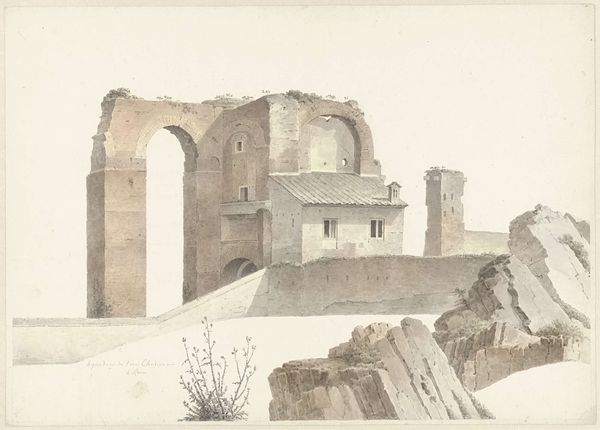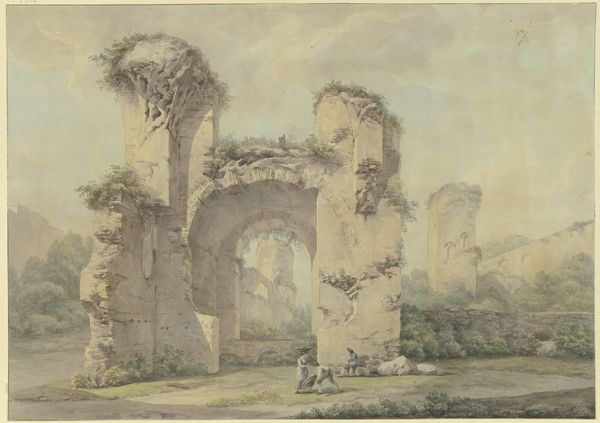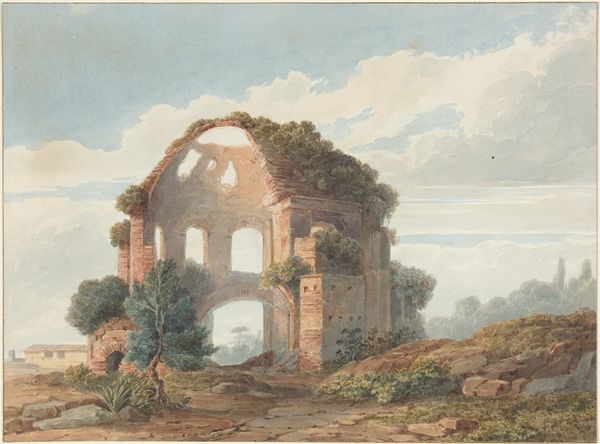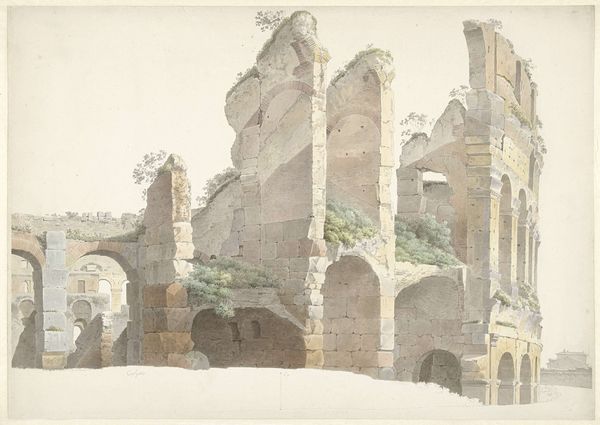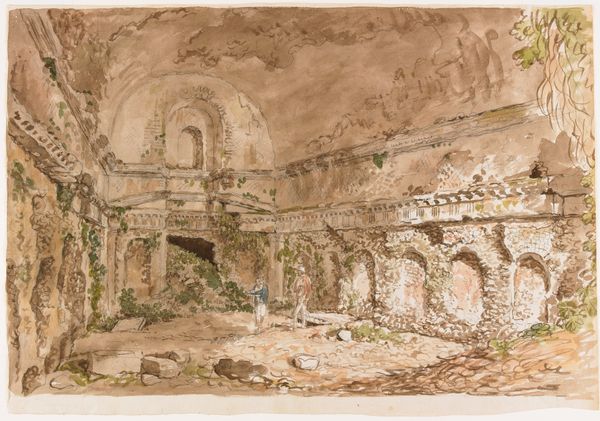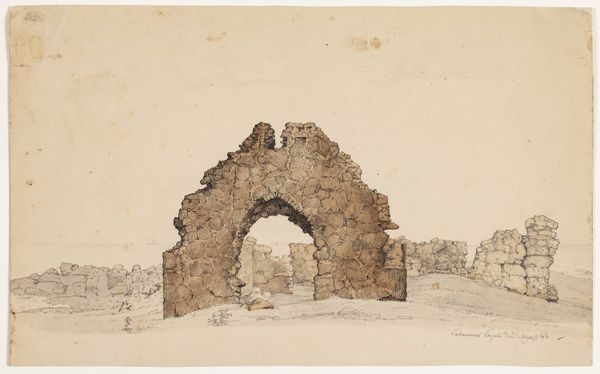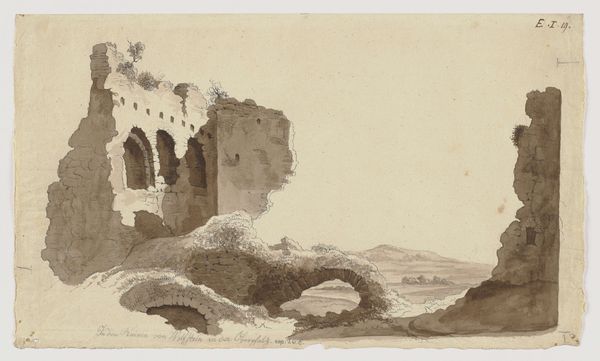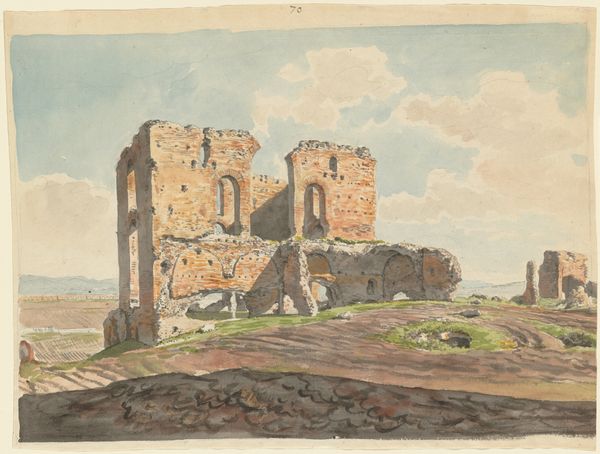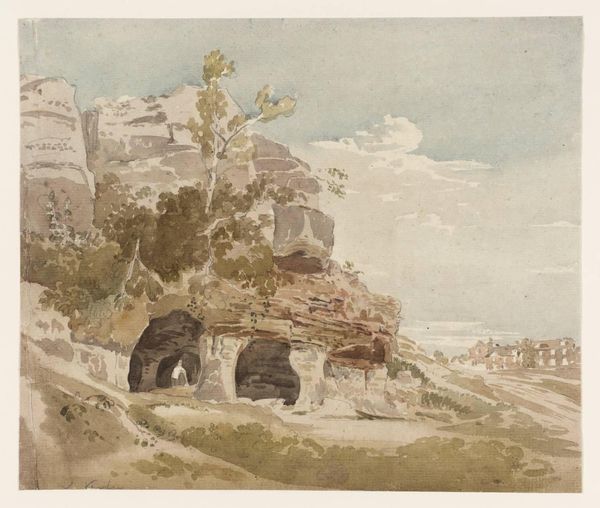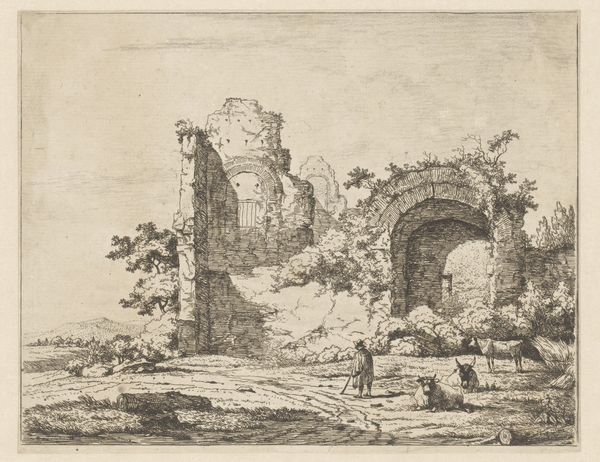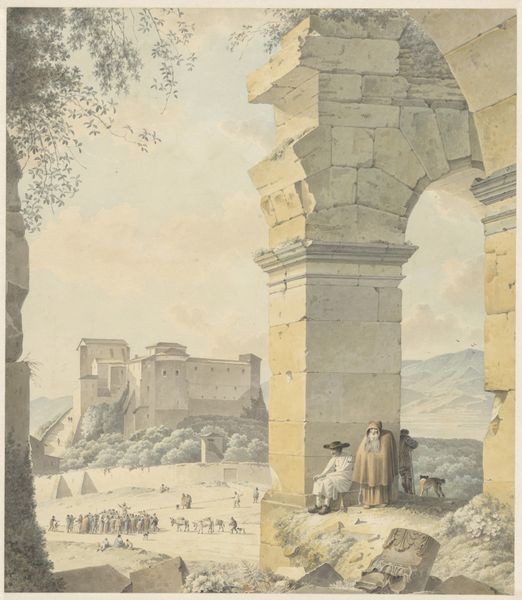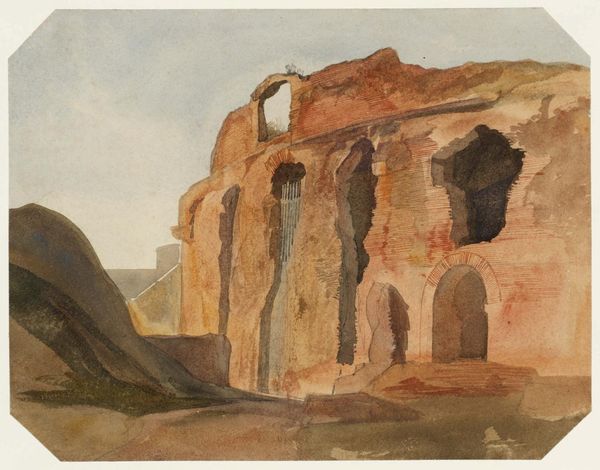
drawing, painting, plein-air, watercolor, ink, indian-ink, architecture
#
drawing
#
16_19th-century
#
painting
#
plein-air
#
landscape
#
oil painting
#
watercolor
#
ink
#
german
#
earthy tone
#
coloured pencil
#
indian-ink
#
romanticism
#
painting painterly
#
cityscape
#
watercolour illustration
#
watercolor
#
architecture
Copyright: Public Domain
Ernst Fries rendered this watercolor painting of the Temple of Minerva Medica in Rome in 1816. We see the ruins of a temple dedicated to the Roman goddess Minerva, who was associated with wisdom, medicine, commerce, handicrafts, poetry, and the arts. The ruins themselves are powerful symbols. Throughout the Renaissance, the ruin motif became intertwined with the idea of the passage of time and the transience of human achievements, or "vanitas". Think, for example, of the many paintings and engravings of ancient Roman ruins that became popular souvenirs for visitors to Italy. In these artworks, the ruins often stand as symbols of the inevitable decline of even the greatest empires, inviting viewers to reflect on their own mortality and the impermanence of earthly pursuits. The Temple of Minerva Medica, once a testament to Roman ingenuity, is now reclaimed by nature. Yet, the ruins also evoke a sense of melancholy and nostalgia, resonating with our collective memory and the inevitable cycle of rise and fall. The crumbling structure, therefore, becomes more than just a historical site; it's a potent symbol of time's relentless march.
Comments
No comments
Be the first to comment and join the conversation on the ultimate creative platform.
